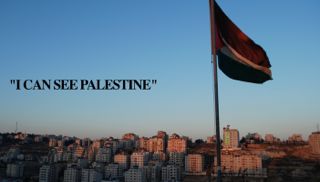Strategic Survey for Israel 2009, which continues the annual Strategic Balance series published by the Institute for National Security Studies, covers the period from the start of 2008 until mid 2009, an event-filled year and a half. In the course of this period, there were no fundamental changes in the basic relations among Middle Eastern states, or between these states and non-state entities in the region. However, some events and developments occurring in late 2008 and early 2009 embody the potential for processes of change.
To a great extent these potential processes of change are connected to the changes of government in Israel and the United States, in particular to the fundamental differences in approach of the new administrations compared to their predecessors’ on issues of regional and global tension originating in the Middle East. The change of government in the US probably heralds the end of an era marked by the concerted attempt to alter the regional political and military balance through the use of force and/or democratization processes imposed from without, as well as by the failure of this attempt.
The new administration in Washington, led by President Barack Obama, brings an essentially different approach to Middle East challenges from the one presented by the Bush administration. It has already signaled a new direction in the two arenas in which the United States is involved militarily – Iraq and Afghanistan – with decisions on withdrawing troops from Iraq and reinforcing the troops in Afghanistan. It has also announced a policy of dialogue and openness to negotiations with Iran and Syria. At the head of the new government established in Israel following the early electionsstands Binyamin Netanyahu, whose platform – greatly different from that of his predecessor – centers on a reluctance to commit to an accelerated political process towards a permanent Israeli-Palestinian settlement. This policy, contrary to the principles guiding the new American administration with regard to the Israeli-Palestinian conflict and the Iranian nuclear issue, is liable to arouse tension between the two nations.
Both of Israel’s main conflict arenas, Syria-Lebanon and the Palestinian theater, were relatively stable or even deadlocked through most of 2008, though they retained the ongoing potential for conflagration. In the wake of the 2006 war, the Israeli-Lebanese border remained calm and without any violent incidents; there is also a fairly stable balance of deterrence between Israel and Hizbollah in Lebanon. Nevertheless, internal conflicts in Lebanon itself have the potential of spilling over into the Israel-Hizbollah dynamic. Elsewhere in this arena, negotiations between Israel and Syria were put on the fast track, but the talks did not come to fruition before Israel’s change of government.
The Palestinian arena saw the further separation of the Gaza Strip from the West Bank. Meanwhile, relations between Israel and the Palestinian Authority were relatively stable. Israel and the PA succeeded in continuing to suppress terrorist activity on the West Bank. Similarly, there were ongoing negotiations between the two sides as part of the Annapolis process, though they too failed to arrive at the stage of binding agreements before the Israeli government fell. At the same time, the slow process of strengthening Palestinian security capabilities and renewing the PA’s control of various areas in the West Bank continued. These were supplemented by fewer limitations imposed by Israel on the freedom of civilian Palestinian movement and measured restraint in Israeli security activity in the region. Nonetheless, the PA’s political power continued to weaken, and the rivalry among its movements intensified. The security tension in the Gaza Strip sphere remained; periods of calm were interrupted by periods of violence, which peaked with the war that broke out in Gaza during the last days of 2008. This war may have far reaching potential implications for Israeli- Palestinian relations, primarily because the confrontation with Hamas increased the worries of the Israeli public about further withdrawals from the West Bank.
To download the full report please click below:
| Attachment | Size |
|---|---|
| 09_FULL_TEXT.pdf | 1.26 MB |
Institute for National Security Studies (INSS) - May 18, 2009 - Back to Resources Page
Did we miss something?
Click here to suggest a state building resource to be added to our fast-growing archive!
















